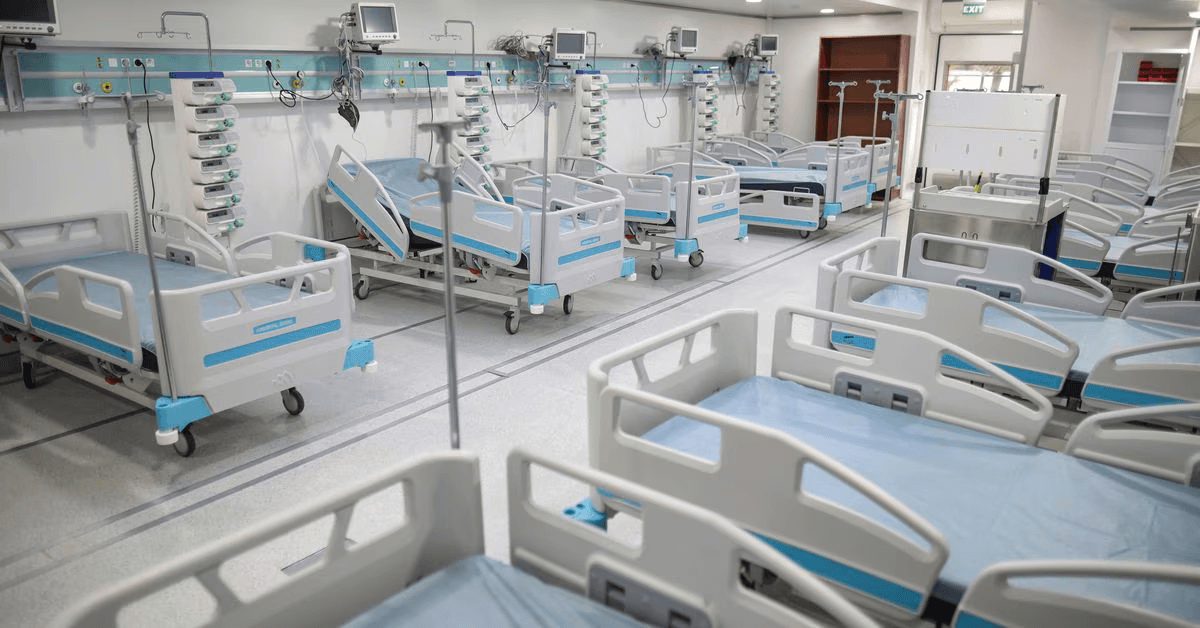Hospital medical furniture plays a vital role in healthcare facilities, providing essential support, comfort, and functionality for patients, healthcare professionals, and visitors. These furniture pieces are designed to meet the specific needs of medical settings, ensuring efficient workflow, infection control, and patient well-being. In this article, we will explore the importance of hospital medical furniture, the different types available, and their contributions to enhancing patient care and comfort.
Introduction: The Role of Hospital Medical Furniture
Hospital medical furniture serves as the backbone of healthcare facilities, providing support, comfort, and functionality in various settings, including patient rooms, examination rooms, waiting areas, laboratories, and operating rooms. These furniture pieces are designed to meet the unique requirements of healthcare environments while ensuring patient safety, infection control, and efficient workflow for healthcare professionals.
Patient Beds and Mattresses
Patient beds and mattresses are crucial components of hospital medical furniture, providing comfort and support for patients during their stay. These beds are designed with adjustable features to accommodate different patient needs, such as adjustable heights, backrests, and side rails. The mattresses are specially engineered to distribute pressure evenly, prevent bedsores, and promote patient comfort.
Examination Tables and Chairs

Examination tables and chairs are used in various medical settings, including examination rooms, clinics, and outpatient departments. These furniture pieces are designed to provide a comfortable and safe surface for patients during medical examinations, procedures, and consultations. Examination tables often have adjustable features, allowing healthcare professionals to position patients for optimal access and comfort.
Patient Room Furniture
Patient room furniture includes essential items that enhance the patient’s comfort and convenience during their hospital stay. These may include:
Bedside Cabinets
Bedside cabinets are placed next to patient beds, providing storage space for personal belongings, medication, and medical supplies. These cabinets are designed with easy-to-clean surfaces and may include features like lockable drawers for secure storage.
Overbed Tables
Overbed tables are adjustable tables that can be positioned over the patient’s bed, allowing for convenient dining, reading, and working. These tables are equipped with wheels for easy maneuverability and often have tilting or height-adjustment mechanisms for patient comfort.
Chairs and Seating
Patient rooms may include chairs and seating options for visitors and patients who need to sit outside their beds. These chairs are designed for comfort and durability, often with easy-to-clean upholstery and ergonomic features.
Wardrobes and Storage Units
Wardrobes and storage units provide additional storage space for patients’ personal belongings, clothes, and supplies. These units are designed to optimize space and facilitate organization.
Waiting Area and Reception Furniture
The waiting area and reception of a hospital are the first points of contact for patients and visitors. The furniture in these areas should be comfortable, durable, and aesthetically pleasing. Some common furniture pieces include:
Reception Desks
Reception desks serve as the central point for administrative tasks, patient registration, and inquiries. These desks are designed to accommodate computer systems, documents, and provide privacy for staff.
Waiting Room Chairs
Waiting room chairs should be comfortable for patients and visitors during their wait. They are often designed with ergonomic features, durable upholstery, and easy maintenance.
Side Tables and Magazine Racks
Side tables and magazine racks provide convenient surfaces for patients to place personal items, drinks, or reading materials. These accessories enhance the comfort and convenience of the waiting area.
Medical Carts and Trolleys
Medical carts and trolleys are essential for the efficient and organized delivery of medical supplies, medications, and equipment throughout healthcare facilities. Some commonly used medical carts include:
Medication Carts
Medication carts are used for storing and transporting medications securely within the hospital. They often include compartments for different medication types, drawers for organization, and lockable features for medication safety.
Procedure Carts
Procedure carts are designed to hold equipment and supplies needed for specific medical procedures. These carts provide easy access to sterile instruments, gloves, and other necessary items, ensuring efficiency during procedures.
Utility Carts
Utility carts are versatile carts used for various purposes, such as transporting linens, collecting dirty supplies, or delivering meal trays. They are designed with sturdy construction, wheels for mobility, and adjustable shelves for flexible use.
Anesthesia Carts
Anesthesia carts are specifically designed to hold equipment and medications required during anesthesia administration. These carts are organized with compartments for different anesthesia supplies and often include gas cylinder holders for safety.
Laboratory Furniture
Laboratory furniture plays a critical role in laboratory settings, providing a functional and safe environment for scientific research, analysis, and experimentation. Common types of laboratory furniture include:
Laboratory Workbenches
Laboratory workbenches provide ample workspace for conducting experiments, analyzing samples, and operating laboratory equipment. These workbenches are designed with chemical-resistant surfaces, built-in storage options, and provisions for safety measures like fume hoods.
Storage Cabinets
Storage cabinets in laboratories are essential for organizing and storing chemicals, reagents, samples, and laboratory equipment. These cabinets are designed to meet safety standards, ensuring proper segregation and storage of hazardous substances.
Fume Hoods
Fume hoods are ventilation devices used to protect laboratory personnel from hazardous fumes, vapors, and dust. These hoods are equipped with airflow control, filtration systems, and transparent panels for observation and manipulation of experiments.
Safety Cabinets
Safety cabinets are used for the secure storage of flammable materials, corrosive substances, and other hazardous chemicals. These cabinets are designed with fire-resistant construction, adjustable shelves, and locking mechanisms to prevent unauthorized access.
Operating Room Furniture
Operating room furniture plays a critical role in surgical settings, providing a sterile and ergonomic environment for surgical procedures. Some common types of operating room furniture include:
Surgical Tables
Surgical tables are designed to provide a stable and adjustable platform for surgical procedures. These tables can be maneuvered into various positions to facilitate surgical access and patient positioning during different surgical specialties.
Mayo Stands
Mayo stands are mobile stands used to hold instruments, supplies, and sterile trays during surgeries. These stands are adjustable in height and provide a convenient surface for surgeons to access necessary tools during procedures.
Surgical Stools
Surgical stools are ergonomic stools designed for surgeons and surgical assistants to sit during procedures. These stools are adjustable in height, often with cushioning and back support, ensuring comfort and proper posture during long surgeries.
Instrument Cabinets
Instrument cabinets are used in operating rooms to store and organize surgical instruments. These cabinets are designed with compartments, trays, and hanging systems to facilitate easy identification, access, and sterilization of instruments.
Ergonomics and Design Considerations
When selecting hospital medical furniture, ergonomic principles and design considerations play a crucial role. Ergonomics focuses on creating furniture that promotes proper body mechanics, reduces strain, and enhances user comfort. Design considerations include ease of cleaning, durability, and compatibility with infection control protocols.
Infection Control Measures
Hospital medical furniture is subject to strict infection control protocols to prevent the spread of infections within healthcare facilities. Surfaces should be easy to clean, resistant to staining, and compatible with disinfection methods. Antimicrobial materials and coatings may be used to inhibit the growth of bacteria and other pathogens.
Conclusion
Hospital medical furniture plays a vital role in enhancing patient care and comfort. From patient beds and examination tables to waiting area furniture and laboratory workbenches, these pieces of furniture are designed to meet the unique requirements of healthcare environments. By considering ergonomics, infection control measures, and design considerations, hospitals can create a safe and comfortable environment that promotes efficient workflow, patient well-being, and optimal healthcare delivery.
FAQs
- Why is hospital medical furniture important? Ans. Hospital medical furniture is important as it provides support, comfort, and functionality for patients, healthcare professionals, and visitors. It enhances patient care, ensures efficient workflow, and contributes to infection control.
- What are some key factors to consider when selecting hospital medical furniture? Ans. Key factors to consider include ergonomics, ease of cleaning, durability, compatibility with infection control measures, and adherence to safety standards.
- What are the different types of medical carts used in hospitals? Ans. Some common types of medical carts used in hospitals include medication carts, procedure carts, utility carts, and anesthesia carts. These carts facilitate the organized and efficient delivery of supplies, equipment, and medications.
- How does hospital medical furniture contribute to infection control? Ans. Hospital medical furniture is designed with infection control measures in mind, such as easy-to-clean surfaces, resistance to staining, and compatibility with disinfection protocols. This helps prevent the spread of infections within healthcare facilities.
- Why is ergonomic design important in hospital medical furniture? Ans. Ergonomic design is important in hospital medical furniture to promote proper body mechanics, reduce strain on patients and healthcare professionals, and enhance user comfort. It contributes to patient well-being and the prevention of musculoskeletal injuries among healthcare providers.



